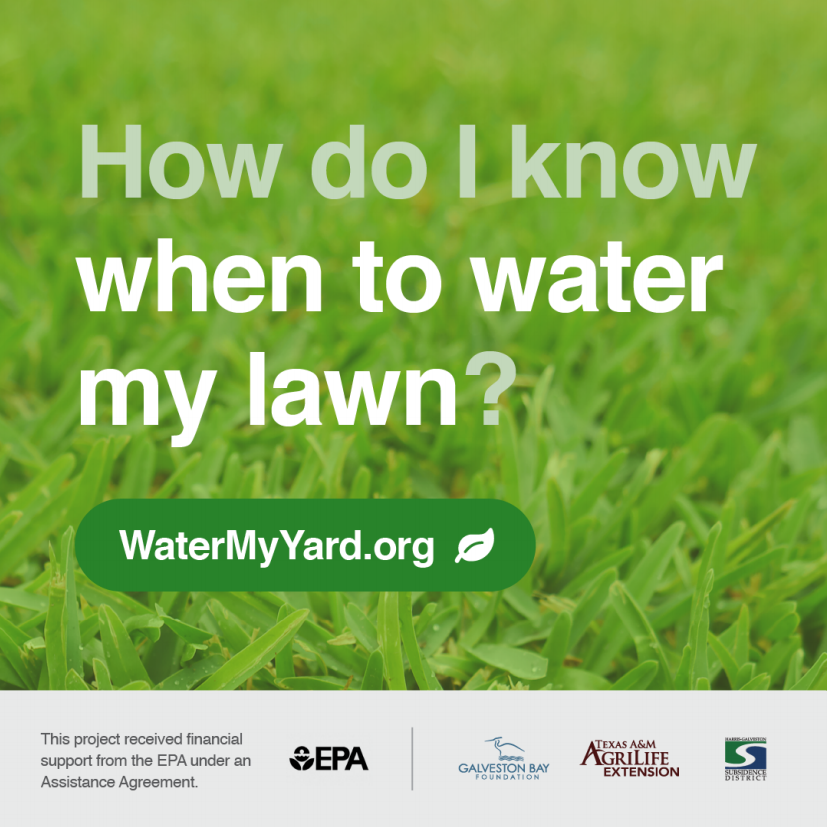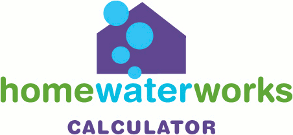Homeowner Resources
Outdoor Resources
In Texas, 30-50% of the water used in single-family homes is used outdoors. As much as 50% of the water used outdoors can be wasted due to overwatering overwatering and evaporation caused by inefficiencies in irrigation methods and systems.
Saving Water Outdoors
Irrigation Systems
Routinely inspect your sprinkler system for leaks, adjust the schedule if needed, and ensure that the sprinkler heads are pointing in the correct direction. Here’s a checklist provided by EPA WaterSense!
If you’re thinking about installing a sprinkler system or upgrading, invest in a WaterSense Labeled Smart Controller that can save a household up to 15,000 gallons of water annually. Not quite ready to upgrade or prefer your current system and still want to improve on your water savings? Check out the free WaterMyYard app created in partnership with Texas A&M AgriLife Extension, which provides personalized watering recommendations using local weather and evapotranspiration data.
Gardening Tips
Choose plants that are adapted or native to the Gulf Coast region. They are drought-tolerant, adapted to the local conditions, including the occasional freezes, and require little maintenance once established. There are a variety of attractive and functional grasses, bushes, trees, and flowers that can make a great addition to your home’s curb appeal. Explore the Texas Plant Society of Texas’ plant list and database for ideas and tips.
Lawn Maintenance
- Utilize mulch to help the soil retain water and prevent evaporation while reducing weed growth and soil erosion.
- Consider low-volume or drip irrigation that is 20-40% more efficient.
- Allow the grass to grow long in the summer. Longer blades of grass provide more shade to the surface soil and roots, reducing evaporation and drying out.
- Go longer between watering (3-4 weeks). Most grass will go dormant during periods of drought, so let it go yellow, and it will bounce back after a good rain or the next time you water.
- Try the cycle-and-soak method! Texas’ Gulf Coast region has predominantly clay-rich soil that cannot soak up water quickly. Give the lawn some time to soak and penetrate down to the roots.
Alternative Options
- Capture rainwater to water your yard, indoor plants, or other outdoor activities such as washing your car or cleaning the pavement. Save even more water by using a broom instead of water to clean your pavement. Learn about rainwater harvesting here!
- If you have a pool, invest in a pool cover to reduce evaporation by more than 90% with the additional benefits of safety and preventing debris.
- Other ideas:
Water My Yard
We have an app for that. The Water My Yard app, created in partnership with Texas A&M AgriLife Extension, gives you personalized recommendations for when to turn on those sprinklers.
A healthy yard needs less water than you think. Even with our hot and dry summers, landscapes only need about an inch of water per week, whether from rain or irrigation.
The Water My Yard app offers free, informed advice that takes the guesswork out of weekly watering. Use the app, receive text or email notifications, or log in to the website.
Interested in promoting the Water My Yard tool to your audiences? Check out our share toolkit!
Indoor Resources
Approximately 70% of water is used indoors with bathroom routines consuming nearly half. There are many ways to help conserve water and cut back on wasteful habits or stop undetected leaks.
Understand Your Water Use
Check your utility bill
Review how much water you are using each month and see how that compares to other months through the year. Check out this guide to understand how to read your water bill.
Use the Water Calculator
Using your zip code, the number of people in your household, and other information, this calculator explores where you use and can save the most water.
Saving Water Indoors
Wash dishes and laundry in full loads.
Hand washing can use up to 27 gallons of water. However, using an ENERGY STAR-certified dishwasher uses 30% less water using about 3-4 gallons of water per cycle while older model washers use up to 14 gallons. When running a full load of dishes, select the correct cycle, skip rinsing before loading, and use the right detergent.
Non-high efficiency (HE) washing machines typically use 19 or more gallons of water while HE top-load washers use around 12-17 gallons and HE front-load washers use about 7 gallons of water per cycle. ENERGY STAR-certified washers use 33% less water than standard washers. Push your savings even further by washing with cold water, skipping extra rinses, selecting the appropriate cycle, and washing certain clothing items after a couple of uses.
Always turn off running water.
A running faucet uses 1-2 gallons of water per minute. Picking new habits like turning it off while lathering soap on your hands before rinsing, brushing your teeth, or shaving can save up to 200 gallons per month! Letting the water run for 5 minutes while washing dishes can waste 10 gallons of water which is equivalent to the energy needed to run a 60-watt light bulb for 18 hours.
Take shorter showers.
A standard shower head uses about 2.5 gallons per minute and older fixtures use as much as 10 gallons per minute. Reduce your shower time to 5 minutes or try turning off the shower while lathering on soap and shampoo.
Eliminate leaks!
Leaks can waste up to 14% and may go undetected for a long time. With new metering technology such as Automated Metering Infrastructure (AMI), residents have access to more accurate water use data and can detect leaks quicker for repairs. If your community does not have AMI, there are other methods of leak detection. Inspect all the water fixtures around the house, use dye to test for toilet leaks, or check your water meter before and after a two-hour period when no water is being used. For more information, check out the 10 Minute WaterSense Challenge.
Replace old fixtures with EPA WaterSense.
WaterSense-labeled products use 20% less water and function just as well or better than the average fixtures. These products can be found at most hardware stores and are marked with the WaterSense logo. Products range from residential toilets, faucets, showerheads, to commercial toilets, urinals, and sprinklers. Search for WaterSense-labeled products here.
For more information on household water use and ways to save water, check out this guide from our friends at the Texas Water Development Board.



